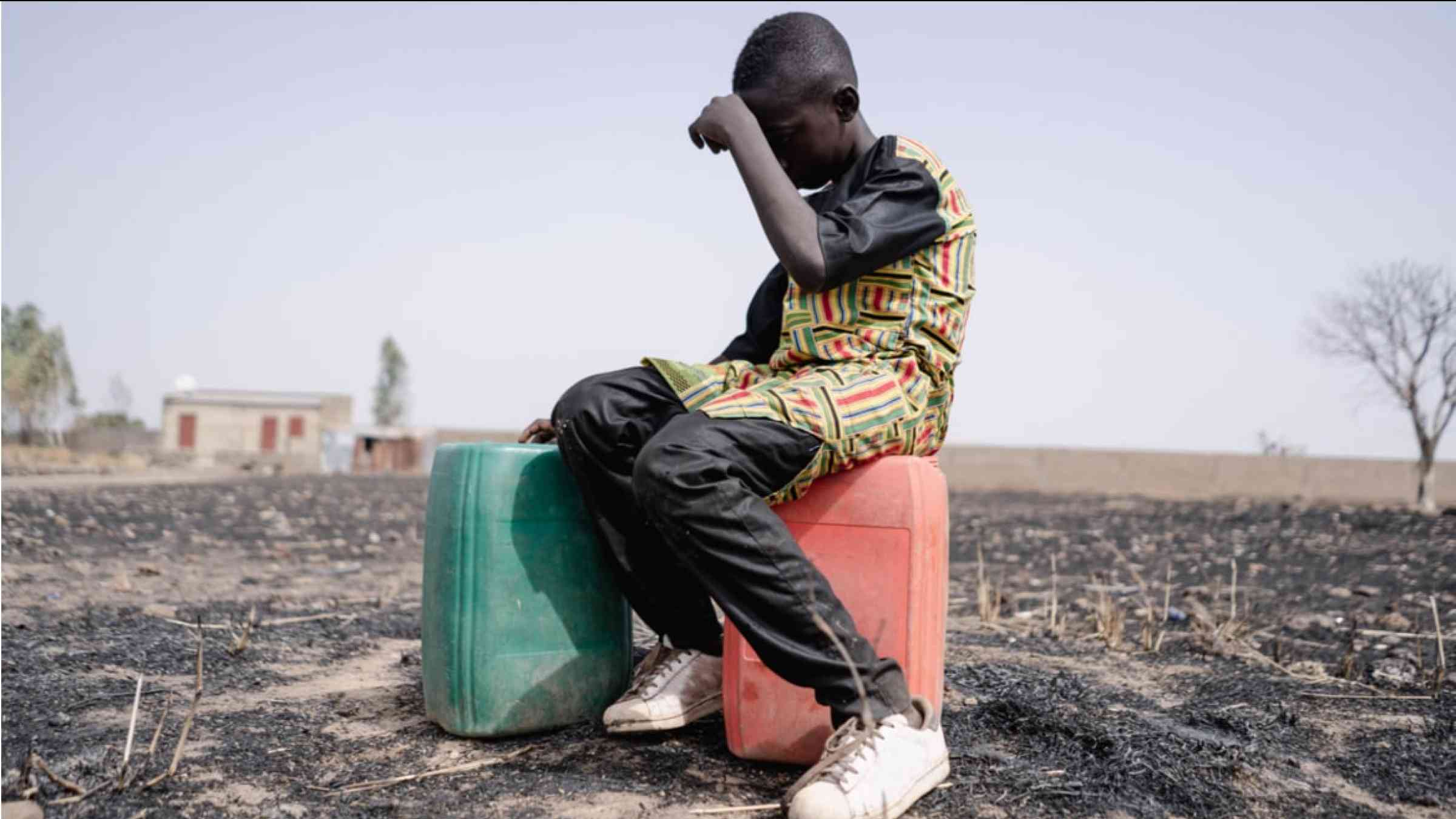
Farmer Nima Elmassad noticed the weather changing around seven years ago. In Sudan’s southern White Nile State, the rains began coming later and falling inconsistently. During the long, harsh dry season, her children had to travel three hours per day to collect water, and all but one dropped out of school. The family donkey that towed their water wagon became progressively weaker.
Straddling the southern edge of the Sahara Desert, Sudan’s climate varies from desert and semi-desert in the north, to arid savannah across the rest of the country. In recent decades, the cumulative effects of conflict, economic sanctions and political instability, coupled with increased water consumption from population growth and agricultural development, have prompted aid groups to warn of an impending water crisis.
Climate change, often described as a ‘threat multiplier’, is adding to this burden. Rainfall has become more erratic, while flooding and drought have become more frequent. Rising temperatures mean the little water that does fall evaporates more quickly, reducing soil moisture. This makes agriculture more perilous for almost two-thirds of rural Sudanese who, like Elmassad, are either smallholder farmers or pastoralists relying on the rains.
Scientists predict that temperatures in Sudan will continue to rise dangerously, and if current rainfall trends continue, the Sahara Desert will continue advancing southward at a rate of 1.5km a year, swallowing agricultural and grazing land. It is a bleak outlook for Elmassad, who has been the sole breadwinner since her husband died six years ago.
Like many farmers in Sudan, Elmassad lacks the income and expertise to adapt to climate shocks. On her farm, the late and sporadic rains mean her crops don’t have enough time to mature, leaving them weak and vulnerable to pests. She estimates her harvests have collapsed by more than half in the last decade.
To make ends meet, Elmassad must work on other farms instead of preparing her own land for the next harvest, trapping her in a cycle of poverty.
Women bear a disproportionate burden from climate change, particularly in Sudan where they are largely responsible for household food security and child rearing, while having a limited voice in decision making.
A project led by the United Nations Environment Programme (UNEP) and executed by Sudan’s Higher Council for Environment and Natural Resources is helping 43 communities across White Nile State build resilience to climate change, with a particular focus on women and nature-based solutions. The project is funded by the Global Environment Facility, a major international backer of climate change projects.
In 2018, a development committee was established in Elmassad’s village, with a requirement that 30 percent of its board are female. The committee examined how climate change was affecting the community and identified ways to help villagers adapt, such as through drought-resilient farming methods and improved access to water.
For Elmassad, the project has been transformational. A 30,000m3 water harvesting reservoir was constructed to trap water in the wet season and store it year-round.
At the reservoir, Elmassad’s youngest son, Elnour, pours jerry cans of clear water into a large blue plastic drum as birds swirl overhead. The site is only 20 minutes from his home, which means he still has time and energy to attend school.
Elmassad, along with more than 280 women in White Nile State, has also planted special drought-resistant, higher-yielding seeds, such as groundnut and sesame, provided by the project. The women learned how to space them apart, apply fungicides and store the harvest properly to keep it from mould and pests.
Community members also planted fruit trees that provide both food and shade. Research shows that on a sunny day, a singly healthy tree can have the same cooling power as two domestic air-conditioners running for 24 hours.
The project has empowered thousands of women by helping them choose from a range of climate adaptation techniques, including more than 1,000 women who were trained how to grow vegetables in tough climatic conditions.
By harnessing nature-based solutions, the project has helped to restore almost 4,000 hectares of forests and rangeland using native species, and overall, more than 8,000 households across White Nile State now have access to climate-resilient food and water sources.
The hope is, in time, to scale up the project to reach more farmers across the country. There are already signs this is happening organically, with smallholders distributing seeds they’ve harvested from improved varieties of crops among other community members.
UNEP is currently supporting 70 countries around the world to adjust to climate change through on-the-ground projects, policy support and high-quality research, like the Adaptation Gap Report, among other things.
Experts say that investing US$1.7 trillion in climate adaptation measures globally would produce more than $7 trillion in economic returns – while saving many lives. For this reason, low- and middle-income countries pushed for higher funding commitments for climate adaptation at the UN Climate Change Conference in November, 2022.
The gathering also saw negotiators delve into the vital question of whom should be paying for damages from climate destruction, especially in poorer countries like Sudan that have historically produced relatively few greenhouse gas emissions.
For Elmassad, the economic benefits of climate adaptation are clear to see. The higher groundnut and sesame yields she reaps allow her to sell some of her harvest to pay for clothes, food and a better education for her family.